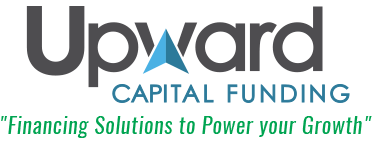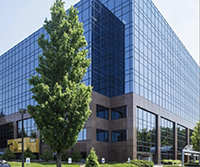Covid-19 Resource Center
What You Need to Know
Table of Contents
- Small business relief financing for COVID-19
- Loan Details and Forgiveness
- Program Overview
- Program information
- Program Requirements
- Eligibility Requirements
- 7a Loan Forgiveness
- How to calculate your maximum loan amount if you have no employees?
- What documents are you required to submit as part of your application
- How to calculate your maximum loan amount if you have employees?
- How can PPP loans be used by individuals with income from self-employment who file a 2019 form 1040,schedule-C?
- Restriction on how you can use PPP loan proceeds
- What amounts are eligible to be forgiven?
- Documents required to request loan forgiveness from your lender
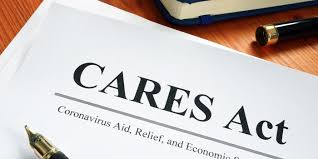
The COVID 19 pandemic has caused major impact as cases rise every single day. While a recession has been confirmed, the federal and state government has advised business owners to take extra precautions as they are forced to obligate many businesses to shut down or operate remotely. In consequence, many industries have been negatively impacted and need capital immediately to stay in business. Currently, there is no official report stating when this pandemic is anticipated to be over, however upward capital funding are offering financing options to those that qualify.

Small business relief financing for COVID-19 may help businesses that need:
- Working capital to cover unexpected costs due to economic changes in the company or loss of revenue
- Payroll to be able to pay employees even if they had to pause work due to the business closing from state regulations as well as employees working remotely. We recommend reading about the new Coronavirus Emergency Aid Package to see if your company meets the requirements
- Increase in equipment, this is particularly true for many healthcare providers including hospitals and urgent care facilities.
- Workforce capacity is another huge need for a few companies. Some industries are facing higher demands of product and services due to the pandemic and therefore need more staff to be able to meet the high demands. Pharmacies, supermarkets, and health care providers are the industries that are mostly impacted.
- Inventory and supply chain have also impacted a lot of companies. Supermarkets, hospital, among many other businesses are on a race to get their hands-on new inventory to meet client needs.
Lenders may begin processing loan applications as soon as April 3, 2020.

Loan Details and Forgiveness
The loan will be fully forgiven if the funds are used for payroll costs, interest on mortgages, rent, and utilities (due to likely high subscription, at least 75% of the forgiven amount must have been used for payroll). Loan payments will also be deferred for six months. No collateral or personal guarantees are required. Neither the government nor lenders will charge small businesses any fees.
Forgiveness is based on the employer maintaining or quickly rehiring employees and maintaining salary levels. Forgiveness will be reduced if full-time headcount declines, or if salaries and wages decrease.
This loan has a maturity of 2 years and an interest rate of .5%.
If your business is unable to meet the updated PPP requirements and guidance, your business has until May 18, 2020 to repay the PPP loan. Not sure if your business meets the updated PPP regulations? Click here to access the Treasury’s most updated PPP FAQs. Instructions on how to apply for the PPP 7(a) loan forgiveness as well as the application is now available.

Small Business Relief Financing for COVID-19
With the passing of the CARES Act, the SBA has created new processes where you can quickly apply for both the PPP (7a) and EIDL (7b). Select your option now.
COVID-19 Relief Financing Options
COVID-19 has affected businesses all over the United States and there is a lot of uncertainty as businesses make their way through the pandemic. Good news is that there is small business relief financing for COVID-19 available.
SBA 7(a) AND 7(b) LOAN PROGRAMS
The SBA has the 7(a) Paycheck Protection Program and 7(b) Economic Injury Disaster Loan (EIDL), available to eligible businesses affected by COVID-19. We break down the requirements, application process, and benefits of each.
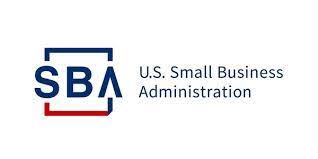
SBA 7(b) Economic Injury Disaster Loan (EIDL)
The SBA is not accepting new applications for the 7(b) Economic Injury Disaster Loan (EIDL), including loan advances, due to the lack of available appropriations funding. Applications that were previously submitted will continue to be processed on a first-come, first-served basis. For more information please visit their website.
Program Overview
The SBA Economic Injury Disaster Loans provide up to $2 million in assistance with an interest rate of 3.75% for-profit companies and an interest rate of 2.75% for non-profits. The loan terms range up to 30 years, and there are no upfront fees or early payment penalties. When applying for an EIDL, business owners can concurrently apply for an advance of up to $10,000. This loan advance will not have to be repaid.
Program information
- Payments start 12 months after the date of the contract
- Funds can be used to business expenses. Expenses include paying sick leave for employees who are unable to work due to a direct effect of COVID-19, payroll, materials, rent or mortgage payments, or repaying outstanding obligations
Program Requirements
Any business (including sole proprietorships, independent contractors and self-employed persons) affected by COVID-19, has less than 500 employees (or meets the SBA’s size standards for their industry) and was in operation before February 1, 2020, is eligible to apply. Private non-profit organizations or 501(c)(19) veterans organizations affected by COVID-19 are also eligible to apply
Those interested in applying must apply before December 31, 2020
- Emergency Advance up to $10,000
- There is no requirement to repay the advance even if your business is denied the 7(b) loan
- An eligible small business must apply for the 7(b) loan to request the Emergency Advance of up to $10,000
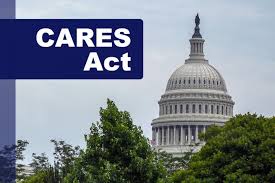
SBA 7(a) Paycheck Protection Program
The SBA is now accepting new applications for the 7(a) Paycheck Protection Program. The SBA will resume processing 7(b) Economic Injury Disaster Loan (EIDL) Loan and Advances that were already in the queue on a first-come, first-served basis.
A business can use 7(a) loan proceeds to pay-off a 7(b) Economic Injury Disaster Loan, however, any portion of the 7(a) funds that are used to pay-off a 7(b) Disaster loan are not eligible to be forgiven under the 7(a) program.
Loan Overview
- The Paycheck Protection Program provides small businesses with funds to pay up to 8 weeks of payroll costs, costs related to group health care benefits during periods of paid sick, medical or family leave, and insurance premiums. The fund can also be used to pay interest on mortgages, rent and utilities and interest on payments on any other debt obligations that were incurred before February 15, 2020.
- Payroll costs are capped at $100,000 on an annualized basis per each employee
- A business can apply for a loan of 2.5 average monthly payroll costs up to $10million
- Use the below methodology to calculate the maximum amount you may be eligible to borrow:
- Step 1: Aggregate payroll costs from the last twelve months for employees whose principal place of residence is the United States
- Step 2: Subtract any compensation paid to an employee in excess of an annual salary of $100,000 and/or any amounts paid to an independent contractor or sole proprietor in excess of $100,000 per year
- Step 3: Calculate average monthly payroll costs (divide the amount from Step 2 by 12)
- Step 4: Multiply the average monthly payroll costs from Step 3 by 2.5
- Step 5: Add the outstanding amount of an Economic Injury Disaster Loan (EIDL) made between January 31, 2020 and April 3, 2020, less the amount of any “advance” under an EIDL COVID-19 loan (because it does not have to be repaid)
- Payroll costs are qualified as:
- Payroll costs consist of compensation to employees (whose principal place of residence is the United States) in the form of salary, wages, commissions, or similar compensation; cash tips or the equivalent (based on employer records of past tips or, in the absence of such records, a reasonable, good-faith employer estimate of such tips); payment for vacation, parental, family, medical, or sick leave; allowance for separation or dismissal; payment for the provision of employee benefits consisting of group health care coverage, including insurance premiums, an retirement; payment of state and local taxes assessed on compensation of employees; and for an independent contractor or sole proprietor, wage, commissions, income, or net earnings from self-employment or similar compensation.
- Term: 2 years
- Interest Rate: 1.0%
- Loan payments will be deferred for 6 months from the date of disbursement of the loan (with potential for deferment of up to 1 year); however, interest will continue to accrue during that 6-month period
- No personal guarantee or collateral is required
- Neither the government nor lenders will charge small businesses any fees
- An eligible business must apply before June 30, 2020
- A business is eligible to apply even if the small business is applying to other relief programs
- No prepayment penalties or fees
- A business is only eligible to receive one PPP loan, so a business should consider applying for the maximum amount
- Use the below methodology to calculate the maximum amount you may be eligible to borrow:
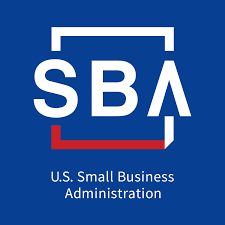
Eligibility Requirements
- Small businesses with 500 or fewer employees whose principal place of residence is in the United States, the business was in operation on February 15, 2020 and paid employees’ salaries and payroll taxes or paid independent contractors
- Sole proprietors, independent contractors or eligible self-employed individuals are eligible if they were in operation on February 15, 2020 and must submit documentation to establish such eligibility such as payroll processor records, payroll tax filings, or Form 1099-MISC, or income and expenses from a sole proprietorship or other documents the lender deems sufficient
- Other businesses may also eligible such as businesses that operate in a certain industry and meet the applicable SBA employee-based size standards for that industries, and:
- Deemed A small business concern as defined in section 3 of the Small Business Act (15 USC 632), and subject to SBA’s affiliation rules under 13 CFR 121.301(f) unless specifically waived in the Act;
- A tax-exempt nonprofit organization described in section 501(c)(3) of the Internal Revenue Code (IRC), a tax-exempt veterans organization described in section 501(c)(19) of the IRC, Tribal business concern described in section 31(b)(2)(C) of the Small Business Act, or any other business;
- Business was in operation on February 15, 2020 and either had employees for whom you paid salaries and payroll taxes or paid independent contractors, as reported on a Form 1099-MISC.

7a Loan Forgiveness
- The amount of the loan can be forgiven up to the full principal amount of the loan and any accrued interest if the borrower uses all the loan proceeds for forgivable purposes and employees and compensation levels are maintained
- The actual amount of loan forgiveness will depend, in part, on the total amount of payroll costs, payments of interest on mortgage obligations incurred before February 15, 2020, rent payments on leases dated before February 15, 2020, and utility payments under service agreements dated before February 15, 2020, over the eight-week period following the date of the loan; however, not more than 25% of the loan forgiveness amount may be attributable to non-payroll costs
- Funds are provided in the form of loans that will be fully forgiven when used for payroll costs, interest on mortgages, rent, and utilities (due to likely high subscription, at least 75% of the forgiven amount must have been used for payroll). Forgiveness is based on the employer maintaining or quickly rehiring employees and maintaining salary levels. Forgiveness will be reduced if full-time headcount declines, or if salaries and wages decrease

- Loan forgiveness may be reduced if:
- Number of Staff: Your loan forgiveness will be reduced if you decrease your full-time employee headcount
- Level of Payroll: Your loan forgiveness will also be reduced if you decrease salaries and wages by more than 25% for any employee that made less than $100,000 annualized in 2019
- Re-Hiring: You have until June 30, 2020 to restore your full-time employment and salary levels for any changes made between February 15, 2020 and April 26, 2020
To request loan forgiveness:
- A small business can submit a forgiveness request to its lender that is servicing the loan
- Request should include documents that verify the number of full-time equivalent employees and pay rates, as well as the payments on eligible mortgage, lease, and utility obligations
- Certification that the documents are true, and that the business used the forgiveness amount to keep employees and make eligible mortgage interest, rent, and utility payments
- The lender must decide on the forgiveness within 60 days
Instructions on how to apply for the PPP 7(a) loan forgiveness as well as the application is now available.
- Starting April 3, 2020, small businesses can start applying with 7(a) approved lenders
- There is a funding cap, so it is in the small businesses best interest to apply as quickly as possible
- A small business can apply through any existing SBA 7(a) lender or through any federally insured depository institution, federally insured credit union, and Farm Credit System institution that is participating. Additional lenders should be available soon to assist in making the loans. A small business should consult with its local lender to see whether that lender is enrolled in the program.

How to calculate your maximum loan amount if you have no employees?
- Step 1: Find your 2019 IRS Form 1040 Schedule C line 31 net profit amount (if you have not yet filed a 2019 return, fill it out and compute the value). If this amount is over $100,000, reduce it to $100,000. If this amount is zero or less, you are not eligible for a PPP loan.
- Step 2: Calculate the average monthly net profit amount (divide the amount from Step 1 by 12).
- Step 3: Multiply the average monthly net profit amount from Step 2 by 2.5.
- Step 4: Add the outstanding amount of any Economic Injury Disaster Loan (EIDL) made between January 31, 2020 and April 3, 2020 that you seek to refinance, less the amount of any advance under an EIDL COVID-19 loan (because it does not have to be repaid).

What documents are you required to submit as part of your application
- 2019 Form 1040 Schedule C (regardless of whether you have filed a 2019 tax return)
- 2019 IRS Form 1099-MISC detailing nonemployee compensation received (box 7)
- Invoice, bank statement, or book of record that establishes you are self-employed
- A 2020 invoice, bank statement, or book of record to establish you were in operation on or around February 15, 2020

How to calculate your maximum loan amount if you have employees?
- Step 1: Compute 2019 payroll by adding the following:
- Your 2019 Form 1040 Schedule C line 31 net profit amount (if you have not yet filed a 2019 return, fill it out and compute the value), up to $100,000 annualized, if this amount is over $100,000, reduce it to $100,000, if this amount is less than zero, set this amount at zero;
- 2019 gross wages and tips paid to your employees whose principal place of residence is in the United States computed using 2019 IRS Form 941 Taxable Medicare wages & tips (line 5c- column 1) from each quarter plus any pre-tax employee contributions for health insurance or other fringe benefits excluded from Taxable Medicare wages & tips; subtract any amounts paid to any individual employee in excess of $100,000 annualized and any amounts paid to any employee whose principal place of residence is outside the United States; and
- 2019 employer health insurance contributions (health insurance component of Form 1040 Schedule C line 14), retirement contributions (Form 1040 Schedule C line 19), and state and local taxes assessed on employee compensation (primarily under state laws commonly referred to as the State Unemployment Tax Act or SUTA from state quarterly wage reporting forms).
- Step 2: Calculate the average monthly amount (divide the amount from Step 1 by 12).
- Step 3: Multiply the average monthly amount from Step 2 by 2.5.
- Step 4: Add the outstanding amount of any EIDL made between January 31, 2020 and April 3, 2020 that you seek to refinance, less the amount of any advance under an EIDL COVID-19 loan (because it does not have to be repaid).

How can PPP loans be used by individuals with income from self employment who file a 2019 form 1040, schedule C?
- Owner compensation replacement, calculated based on 2019 net profit
- Employee payroll costs (as defined in the First PPP Interim Final Rule) for employees whose principal place of residence is in the United States, if you have employees
- Mortgage interest payments (but not mortgage prepayments or principal payments) on any business mortgage obligation on real or personal property (e.g., the interest on your mortgage for the warehouse you purchased to store business equipment or the interest on an auto loan for a vehicle you use to perform your business), business rent payments (e.g., the warehouse where you store business equipment or the vehicle you use to perform your business), and business utility payments (e.g., the cost of electricity in the warehouse you rent or gas you use driving your business vehicle). You must have claimed or be entitled to claim a deduction for such expenses on your 2019 Form 1040 Schedule C for them to be a permissible use during the eight-week period following the first disbursement of the loan (the “covered period”). For example, if you did not claim or are not entitled to claim utilities expenses on your 2019 Form 1040 Schedule C, you cannot use the proceeds for utilities during the covered period.
- Interest payments on any other debt obligations that were incurred before February 15, 2020 (such amounts are not eligible for PPP loan forgiveness).
- Refinancing an SBA EIDL loan made between January 31, 2020 and April 3, 2020 (maturity will be reset to PPP’s maturity of two years). If you received an SBA EIDL loan from January 31, 2020 through April 3, 2020, you can apply for a PPP loan. If your EIDL loan was not used for payroll costs, it does not affect your eligibility for a PPP loan. If your EIDL loan was used for payroll costs, your PPP loan must be used to refinance your EIDL loan. Proceeds from any advance up to $10,000 on the EIDL loan will be deducted from the loan forgiveness amount on the PPP loan.
Restriction on how you can use PPP loan proceeds
- At least 75 percent of the PPP loan proceeds shall be used for payroll costs. For purposes of determining the percentage of use of proceeds for payroll costs (but not for forgiveness purposes), the amount of any refinanced EIDL will be included.
What amounts are eligible to be forgiven?
- The amount of loan forgiveness can be up to the full principal amount of the loan plus accrued interest. The actual amount of loan forgiveness will depend, in part, on the total amount spent over the covered period on:
- Payroll costs including salary, wages, and tips, up to $100,000 of annualized pay per employee (for eight weeks, a maximum of $15,385 per individual), as well as covered benefits for employees (but not owners), including health care expenses, retirement contributions, and state taxes imposed on employee payroll paid by the employer (such as unemployment insurance premiums);
- Owner compensation replacement, calculated based on 2019 net profit with forgiveness of such amounts limited to eight weeks’ worth (8/52) of 2019 net profit, but excluding any qualified sick leave equivalent amount for which a credit is claimed under section 7002 of the Families First Coronavirus Response Act (FFCRA) (Public Law 116-127) or qualified family leave equivalent amount for which a credit is claimed under section 7004 of FFCRA;
- Payments of interest on mortgage obligations on real or personal property incurred before February 15, 2020, to the extent they are deductible on Form 1040 Schedule C (business mortgage payments);
- Rent payments on lease agreements in force before February 15, 2020, to the extent they are deductible on Form 1040 Schedule C (business rent payments); and 12
- Utility payments under service agreements dated before February 15, 2020 to the extent they are deductible on Form 1040 Schedule C (business utility payments).
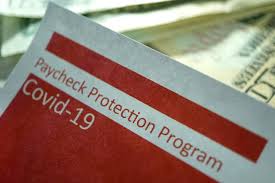
Documents required to request loan forgiveness
- Borrower certification
- Items specific for businesses with employees:
- Form 941
- Quarterly wage unemployment insurance tax reporting forms or equivalent payroll processor records that best correspond to the covered period (with evidence of any retirement and health insurance contributions)
- Items specific for self-employed individuals:
- 2019 Form 1040 Schedule C to determine the amount of net profit allocated to the owner during the covered period
- Evidence of business rent, business mortgage interest payments on real or personal property, or business utility payments during the covered period if you used loan proceeds for those purposes
- 2019 Form 1040 Schedule C that was provided at the time of the PPP loan application must be used to determine the amount of net profit allocated to the owner for the eight-week covered period

For more information about SBA approved 7(a) lenders and the application process, click here https://www.sba.gov/funding-programs/loans
A small business must submit the SBA Form 2483 (Paycheck Protection Program Application Form) and payroll documentation
Application: https://home.treasury.gov/system/files/136/Paycheck-Protection-Program-Application-3-30-2020-v3.pdf
Instructions on how to apply for the PPP 7(a) loan forgiveness as well as the application is now available.
For more information, please visit https://www.sba.gov/funding-programs/loans/paycheck-protection-program-ppp
Documents required to request loan forgiveness from your lender
- Borrower certification
- Items specific for businesses with employees:
- Form 941
- Quarterly wage unemployment insurance tax reporting forms or equivalent payroll processor records that best correspond to the covered period (with evidence of any retirement and health insurance contributions)
- Items specific for self-employed individuals:
- 2019 Form 1040 Schedule C to determine the amount of net profit allocated to the owner during the covered period
- Evidence of business rent, business mortgage interest payments on real or personal property, or business utility payments during the covered period if you used loan proceeds for those purposes
- 2019 Form 1040 Schedule C that was provided at the time of the PPP loan application must be used to determine the amount of net profit allocated to the owner for the eight-week covered period
For more information about SBA approved 7(a) lenders and the application process, click here https://www.sba.gov/funding-programs/loans
A small business must submit the SBA Form 2483 (Paycheck Protection Program Application Form) and payroll documentation
Application: https://home.treasury.gov/system/files/136/Paycheck-Protection-Program-Application-3-30-2020-v3.pdf
Instructions on how to apply for the PPP 7(a) loan forgiveness as well as the application is now available.
For more information, please visit https://www.sba.gov/funding-programs/loans/paycheck-protection-program-ppp

